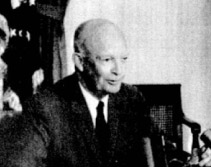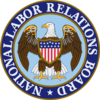1959 Landrum-Griffin Act
 After passage of the Taft-Hartley Act, the number of union victories in NLRB-conducted elections declined. During the 12-year administration of the Wagner Act, unions won victories in over 80 percent of elections. But in that first year after passage of the Taft-Hartley Act, unions only won around 70 percent of the representation elections conducted by the agency.
After passage of the Taft-Hartley Act, the number of union victories in NLRB-conducted elections declined. During the 12-year administration of the Wagner Act, unions won victories in over 80 percent of elections. But in that first year after passage of the Taft-Hartley Act, unions only won around 70 percent of the representation elections conducted by the agency.
During the middle and late 1950's, the labor movement was under intense Congressional scrutiny for corruption, racketeering, and other misconduct. By 1959, Congress concluded that further reforms were needed to address gaps in both the Wagner Act and the Taft-Hartley Act. In the fall of 1959, President Dwight Eisenhower signed into law the new Labor-Management Reporting and Disclosure Act (Landrum- Griffin Act) that amended Taft-Hartley so that:
- State courts and state labor relations boards were given jurisdiction over cases declined by the Board under its jurisdictional standards.
- Secondary boycott prohibitions were tightened and hot cargo agreements (under which employers committed themselves in advance to boycott any other employer involved in a dispute with the union) were outlawed.
- A new unfair labor practice made it unlawful for a union to picket for recognition or organizational purposes in certain circumstances.
- Pre-hire and seven-day union shop contracts were legalized for the construction industry.
- Permanently replaced economic strikers were given the right to vote in representation elections within one year of the beginning of the strike.
- The non-Communist affidavit provisions were repealed.
- The Board was authorized to delegate most of its authority to define bargaining units and to direct elections to its regional directors, subject to discretionary review.
- Other parts of the new law established a code of conduct guaranteeing certain rights to union members within their union, and imposed reporting requirements on unions, union officers, employers, and consultants. These provisions were assigned for administration to the Department of Labor. Thus, the Landrum-Griffin Act protected employees' union membership rights from unfair practices by unions, while the National Labor Relations Act protected employee rights from unfair practices by employers or unions.
Photos: President Eisenhower delivers radio and television broadcast on the need for Landrum- Griffin Act, August 1959; Washington Post, September 3, 1959.



